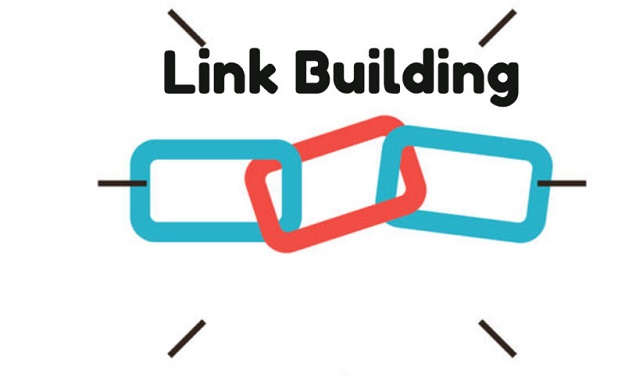With 2020 being the biggest year for most businesses in the digital industry, powerful SEO practices are no doubt at the thick of every action.
Apparently, the majority of focus of SEO is going to be for user-focused optimization, as for this discussion, we’re going to talk about the on-page elements that matter for digital marketing teams in ranking their businesses up the search engine’s ladder.
Why need on-page SEO?
Somehow, the term “SEO-optimized content” doesn’t please many people much. It’s often taken as an ill practice, however, it’s equally relevant as well.
Search engines examine a number of reasons responsible for ranking your page on certain keywords. Now it is our job to help search engines locate the targeted keywords from a content piece in order to make it relevant for readers, and eventually gain a spot in the first page.
This is where on-page SEO activities step in! Although there are a number of other factors as well including social media signals, backlinks, etc. that Google consider before ranking your page, but our primary goal is to optimize an article is a smart, natural way and up the SEO efforts by healthy means.
What are the on-page SEO elements to use in 2020?
Meta title
Easily, the most significant factor for on-page activities due to the fact that the more relevant and optimized your title is, the higher the chances that people will click through it. Subsequently, the more clicks your post registers, the further up it will go in rankings.
Try to use the targeted keyword, or keyword phrase, at the start of the H1 title. However, if not possible due to the title structure of wordings, at least place it somewhere within the title.
Do note that repeating the same the keyword, trying to stuff in twice in the title tag is a big NO. The practice could actually hurt your current ranking as well.
Post permalink structure
Ensuring that your URL is appropriately displayed is important. Again, you need to use the targeted key phrase and leave out symbols, breaks, commas, special characters, etc. in the URL.
Using dashes or hyphens is accepted to break the words in the URL structure, as they are widely supported by many web browsers today.
Heading tags
Heading tags are used for different headings, subheadings, and key pointers throughout a blog post.
In WordPress, the title tag is H1, and using the H1 tag once is enough. To break the content in bite-sized chunks, H2 and H3 can be used. At the same time, excessively using H2 and H3 tags is also not advised.
Keyword density

Another major element that is often times not respected enough, but keyword density in any content piece, regardless of the top or word count, does affecting the ranking of your post.
Try using a blend of LSIs and keep the keyword density around 1.5%. Yes, there is no defined equation to calculate the exact number of instances, but using semantically related keywords provides a great deal of help to the search to better understand your content.
Putting it simply, using the keyword in the start and end paragraph is there, besides that, anywhere in the content where it makes sense.
Meta tags
Adding a unique and appropriate meta description in each article piece is a strong push in your on-page SEO efforts. Same as above, the targeted keyword needs to be included in the meta description as well. There are many SEO experts out there not agreeing on the meta description’s influence in the ranking game, however, the truth is quite opposite.
There is a powerful connection between an optimized meta description and an article’s ranking. Search engines finding the keyword for your content isn’t enough, but the users should click on your post as well. The idea is to write user-friendly meta descriptions and make them relatable to your post.
According to Google, meta keywords doesn’t matter, however, the case is otherwise for Bing.
Image optimization
Image optimization is another trend that is gaining momentum in the grand SEO game throughout the global industry. While the use of images isn’t stopping anytime in 2020 and beyond.
Try to incorporate the targeted keyword phrase in the “Alt Text” and “Image Title” to make your more relevant and focused. The point is to make your images engaging, self-explanatory and become a visual voice for your content. Remember, the better the user’s engagement, the better the chances of grabbing the top spot in the rankings.
However, even in images you need to consider some limitations carefully. Large, heavy images tend to slow down your website, and having an extended loading time is going to negatively affect your site’s rankings.
Hence, try to compress images, use CDN, and a caching plugin. Furthermore, you can also go through informative guides on how to speed up your website.
Word count per post
Short blog posts fail quite disastrously in impressing Google. Gone are the days when a quick, 500-word piece took little effort and get ranked in no time.
Today, extensive, but informative and relevant, content pieces are the ones that can compete in the highly saturated competition for the top places in a search engine.
Normally, a 1200-word piece works well in justifying a topic and the demand of Google’s algorithms for ranking. However, increasing the word count is always appreciated.
It is highly recommended to conduct a thorough research and fill the content with updated facts and figures if you want to create a great content piece worthy of grabbing Google’s attention. This is particularly important if you’re targeting competitive, high-volume keywords.
I recommend analyzing your competitors’ posts targeting same, or at least similar, keywords. You can use any on-page SEO tool to determine the top results for any targeted keyword phrase.
In short, there is no fix word count to follow for every industry, just keep in mind that Google tends to pay more attention and rank longer pieces better. For example, this post is around 1400 words.
Add schema
It might not seem much, but adding schema can really help you outrank the other names in the competition. By including the schema, or structured data, you’re aiding the search engine understand your content better.
In other words, you’re giving relevance to the context of your content. For instance, adding the star ratings, or review, in a website listed in a search engine.
Similarly, schema can also be used for blog pieces and business websites. If you’re using WordPress, you can use a Schema Pro plugin which allows the user to easily add various schema types.
On the other hand, use any schema markup generator tool to create and manually add it on your website pages.
Internal linking

Add related links inside your content piece from other published blog posts. Besides creating an engagement between different blogs in a website, internal linking will also pass the page rank to other pages on your website.
When doing internal linking, use a keyword as the anchor text, again, avoid stuffing against all odds. Putting it simply, internal linking practice tell Google that you’ve added additional information besides the original content in the post as well. Albeit, the linking should be necessary and on-point.
External linking
Linking to external sources is also a great practice in making your blog posts more powerful. Not to mention, the external linking too should be relevant to the message in your content.
However, do note that only linking to trusted, authoritative websites reap the best results. And if you unsure on the authority and authenticity of a website, you may use a no follow tag that stops passing link juice to potentially bad websites.
In other words, use do follow links for popular, trusted platforms and no follow for the less trusted ones.
Produce engaging content

Writing engaging content is a non-negotiable! Nevertheless, we’re well past the time when people could trick Google with low or mediocre quality content with little effort and acquire top rankings.
Today, the quality guidelines for content and rankings is stricter than ever. Remember, your content piece should act as a true manual for a particular keyword. The trick is to write in a way that resonates with the readers’ demand. Create a somewhat intrigued content that sparks curiosity in the audience, and then answer them accordingly.
Understanding what your audience wants is the key! While not being able to write engaging content comes with really severe consequences including short time spent on the blog page, plummeted rankings, and higher bounce rates.


